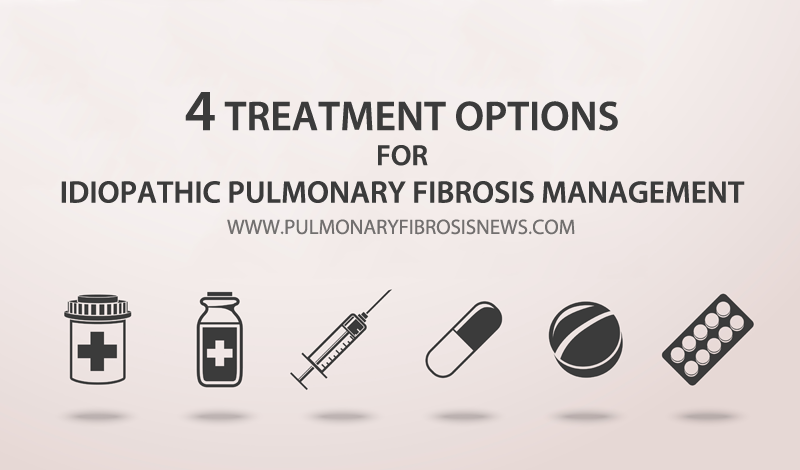Idiopathic Pulmonary Fibrosis Management: Four Treatment Options
Written by |

1. Medication
Currently, two medicines are approved by the U.S. Food and Drug Administration (FDA) for patients with idiopathic pulmonary fibrosis (IPF). Both Esbriet (pirfenidone) and Ofev (nintedanib) became available in 2014.
Taken orally, Esbiret is an anti-inflammatory and an anti-fibrotic drug shown effective in reducing inflammation and fibrosis simultaneously.
Ofev is used to inhibit tyrosine kinase, an enzyme essential for signal transduction pathways that trigger growth factors. It also binds to the phosphorylating site of tyrosine kinase, which blocks the cell signaling mechanism and slows the disease progression.
Other therapies exist.
IPF patients may also benefit from flu and pneumonia vaccines to help prevent infections; cough medicines or oral codeine to relieve the symptoms; vitamin D, calcium, and a bone-building medicine to help prevent bone loss; and anti-reflux therapy to help control gastroesophageal reflux disease (GERD).
But according to the National Heart, Lung, and Blood Institute (NHLBI), one common treatment is likely harmful: “A common treatment for IPF is a combination of prednisone, azathioprine, and N-acetylcysteine. However, this treatment was recently found harmful in a study funded by the (NHLBI).”
2. Oxygen Therapy
Because of scarring in the lungs is a common characteristic of IPF, patients may experience low levels of oxygen in the blood and difficulties breathing. To address the problem, physicians may recommend oxygen therapy; a treatment course based on the administration of oxygen though nasal prongs or a mask. It may be used only while exercising and sleeping, or at all times. Oxygen therapy decreases shortness of breath and allows patients to be more active.
3. Pulmonary Rehabilitation
Pulmonary rehabilitation is a standard treatment program consisting of several courses of treatment to improve patients’ overall health. It is recommended for patients who suffer from chronic lung diseases including IPF. It includes exercise training, nutritional counseling, energy-conserving techniques, breathing strategies, and psychological counseling, and group support. A specialized team also teaches the patient how to best manage the disease.
4. Lung Transplant
Lung transplantation is often the last resort when the disease worsens quickly and becomes severe. It consists of the surgical substitution of the patient’s sick lungs with healthy lungs from a donor. The transplant can significantly improve the IPF patient’s quality of life and total life expectancy. Two major risks associated with a lung transplant are rejection of the organ and infection, but patients can avoid the problems by taking prescribed medicines for the rest of their life. The supply of donor lungs is limited, however, leaving patients to wait years on a list before a compatible organ is found.
Learn more about pulmonary fibrosis: https://bit.ly/1VElTQA
Pulmonary Fibrosis News is strictly a news and information website about the disease. It does not provide medical advice, diagnosis or treatment. This content is not intended to be a substitute for professional medical advice, diagnosis, or treatment. Always seek the advice of your physician or other qualified health provider with any questions you may have regarding a medical condition. Never disregard professional medical advice or delay in seeking it because of something you have read on this website.






